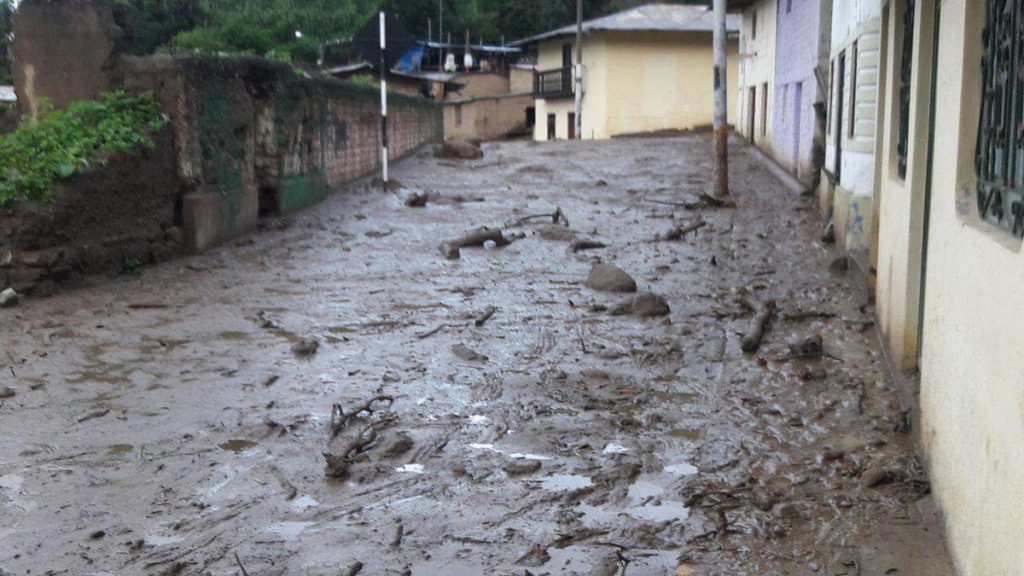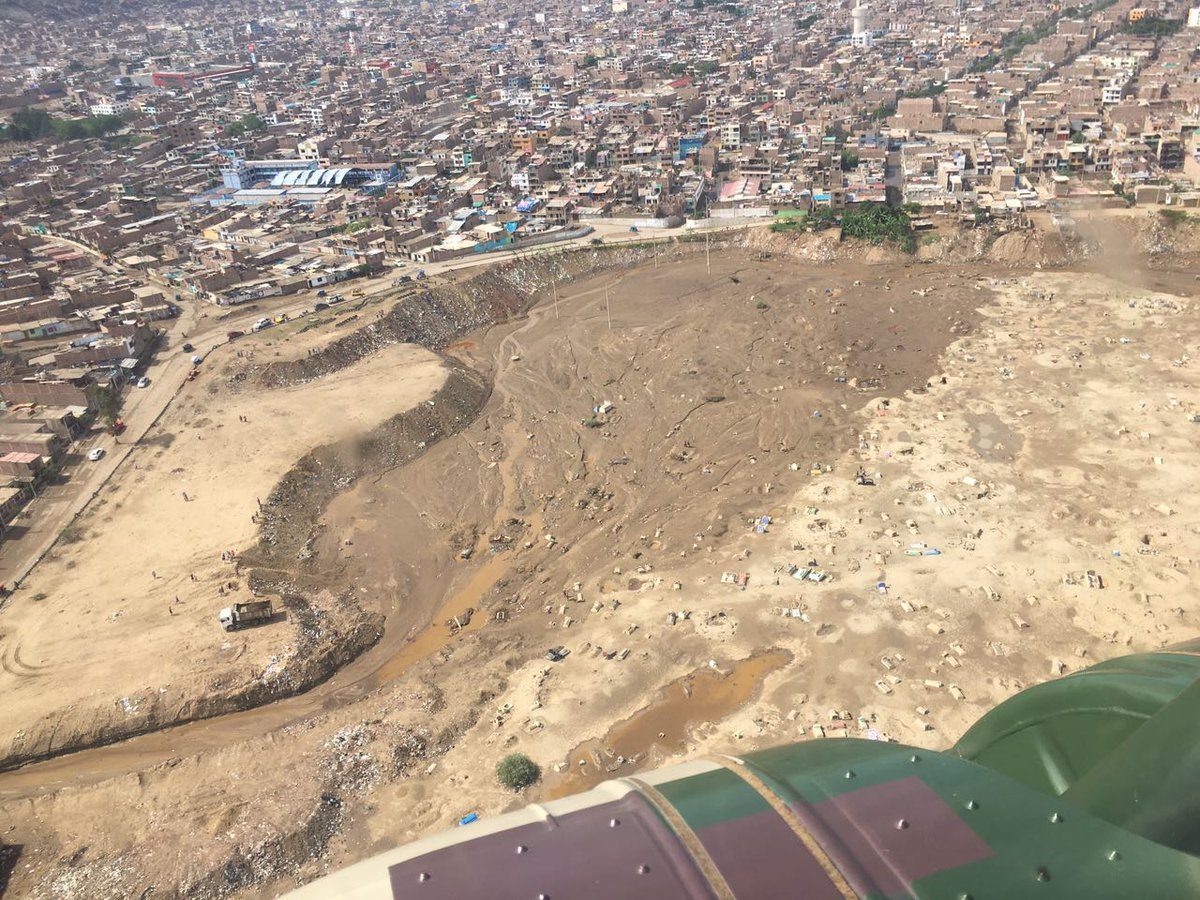Floods and mudslides have affected parts of Lima Region, including the capital, where several rivers have overflowed.
Other parts of the country have also been affected, including the regions of Piura, La Libertad, Lambayeque and Callao.
Sadly the recent flooding is nothing new for many communities. The country has been experiencing periods of heavy rainfall since December 2016 and over 60 people have died as a result of flooding and landslides since then.
Local observers are calling the unusual climatic conditions "El Niño Costero" and are blaming the heavy rainfall on higher temperatures of the eastern Pacific Ocean waters. Further rainfall is forecast and authorities are bracing themselves for two more weeks of heavy rain, potential flooding and landslides.
Floods in Lima region
Around 10,000 people have been affected by the current flood event in Lima Region.
On Tuesday 14 March, the rivers Rimac, Huaycoloro and Huaicos all overflowed in different points of the capital affecting Chaclacayo, Lurigancho-Chosica, El Augistino and Punta Hermosa. A bridge dramatically collapsed in Talavera, San Juan de Lurigancho, Lima Province.
Elsewhere in in Lima region the Supe river overflowed, inundating nearby areas in Ambar District. Authorities report that Mala, Chilca and Cañete have also been affected by flooding.
Aviso!
Continúan los estragos por lluvias en #Perú.
Se colapsa Puente Talavera en San Juan de Lurigancho, Provincia de Lima
Via @udealima pic.twitter.com/DpTvg0RKYI
— Geól. Sergio Almazán (@chematierra) March 17, 2017
Northern Peru
Further flooding has also affected northern areas of the country over the last few days.
In Piura, the Piura River burst its banks leaving 12,000 people homeless, according to local media.
The Peruvian Army rescued a group of people trapped by flooding as a result of heavy rains throughout Peru's northern Lambayeque region over the past days.
In La Libertad, flooding has been reported near Trujillo.
Precisos instantes del rescate aéreo de pobladores aislados en distrito de Pacora, Lambayeque, por personal del @EjercitoPeru #UnaSolaFuerza pic.twitter.com/k466V5buM9
— MINDEF_PERU (@MindefPeru) March 14, 2017
Schools closed
Government Ministers have been sent out to assess flood damage in affected areas, including in Callao region, as well as Lima and parts of the north.
The President of Peru called on citizens to be cautious and not taking risks like crossing flooded roads or weakened bridges.
Schools have been closed in several regions affected by the heavy rainfall, according to Peru's Ministry of Education.
Recent rainfall
Figures below according to Peru's meteorological agency, El Servicio Nacional de Meteorología e Hidrología del Perú (SENAMHI), for a 24 hour period.
14 March, 2017
Lambayeque, Jayanca - 94.8 mm
Cajamarca, Asunción - 55 mm
Lambayeque, Cayalti - 51.3 mm
Lima, Canta - 22.4 mm
Pasco, Pozuzo - 61.5 mm
Huánuco, Tingo María - 54.9 mm
Tumbes, Papayal - 52.2 mm
Amazonas, Chiriaco - 49.2 mm
Piura, Ayabaca - 45.8 mm
13 March, 2017
Piura, Chusis - 51.3 mm
Moquegua, Puquina - 32 mm
Lambayeque, Reque - 29.8 mm
Lambayeque, Oyotun - 51.4 mm
Piura, Huarmaca - 50.4 mm
Rivers
According to a report of 16 March by Centro de Operaciones de Emergencia Nacional (COEN), at least 10 rivers remained on alert throughout the country.
In Lima Region there were 8 rivers on alert: Chancay-Huaral (yellow level alert), Rímac and Cañete (orange level), Santa Eulalia, Mala, Huaura, Lurín and Chancay (red level).
Although still on orange alert, flows of the Rímac river at Chosica, Lima, appeared to easing. On 16 March SENAMHI recorded a flow of 88.12 m3 / s, down from the previous day's measurement of 92.62 m3 / s.
Elsewhere, the Virú and La Leche rivers were on yellow alert and the Jequetepeque and Tumbes orange level alert.





Reader Comments
to our Newsletter